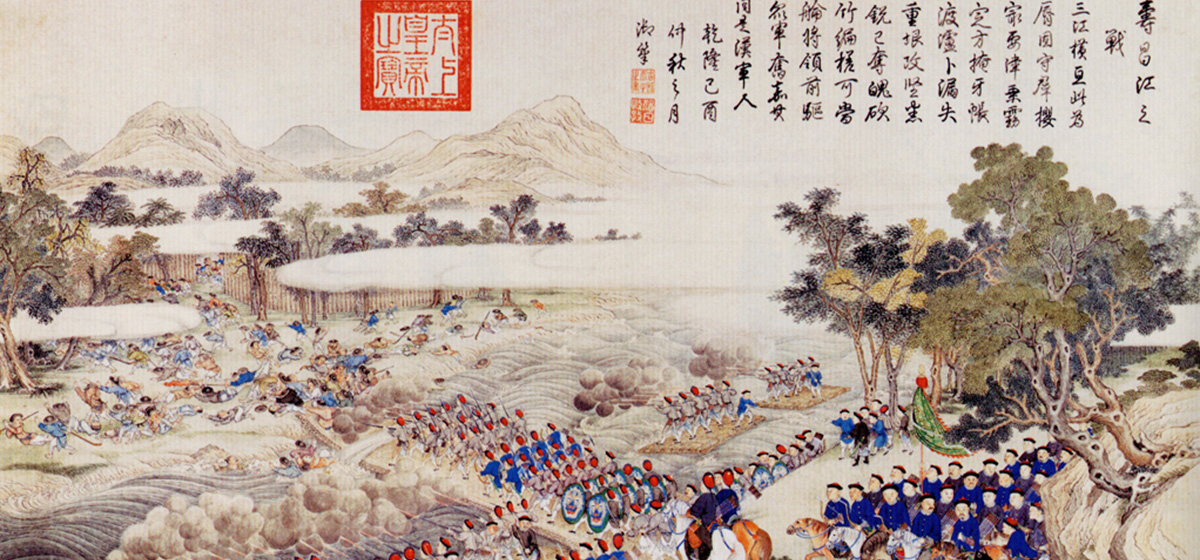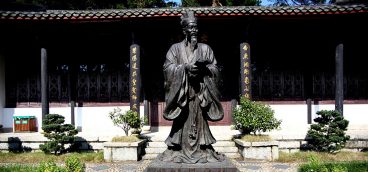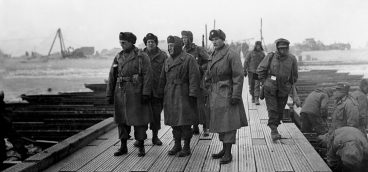The Unknown History of Vietnam

“No country ever profited from protracted warfare.” –Sun Tzu, “The Art of War,” Chapter 2
Now that we’ve Sun Tzu-ized Korea, let’s take a look at America’s most destructive proxy war since World War II—indeed, more destructive than all the proxy wars in American history put together.
Vietnam
Since the beginning of the American Republic, we have fought nearly 200 proxy wars, or “small” wars somewhere in the world, “from the halls of Montezuma [Mexico City] to the shores of Tripoli [the Barbery states on the north coast of Africa].”
Some of these wars were so small that not a single American life was lost, even when the accomplishments were large (Bosnia, Kosovo). Others—Korea, Iraq II, Afghanistan—cost thousands of U.S. lives. But put them all together and the cost was not as high as the more than 58,000 Americans killed in Vietnam.
Vietnam was a vastly complex conflict, but Sun Tzu’s views of it would have been simplicity itself: First, it was a war that should never have been fought. Second, if it had to be fought, it should have been fought very differently.
“[A general] who knows neither the enemy nor himself will inevitably be defeated.” –Sun Tzu, “The Art of War,” Chapter 3
As we already know, Sun Tzu insisted that for a war to be successful, we must know our enemy even better than we know ourselves. Yet America blundered into a two-decade-long war against an enemy it knew almost nothing about—and what we thought we knew turned out to be wrong.
To understand why, we need to go back in history nearly 3,000 years when Vietnam became a recognizable entity (in roughly 700 BC). The country remained an independent state until about 100 BC when it was conquered by the Chinese during the Western Han Dynasty.
For the next 1,000 years, Vietnam was exploited by China and treated as little more than another Chinese province, albeit one populated by “barbarians” rather than Han Chinese.
Although the Vietnamese mounted many uprisings against the hated Chinese, it wasn’t until the Battle of Bạch Đằng in 938 AD that the Chinese yoke was finally thrown off. General Ngô Quyền, who defeated the forces of the Southern Han Dynasty and launched (that is, relaunched, after 1,049 years) an independent Vietnam, fills a role in Vietnamese history, culture and legend roughly equivalent to that of George Washington in the United States.
It’s useful to keep in mind that for all those centuries, “Vietnam” was in fact what we think of as North Vietnam. The northern part of the Vietnamese peninsula was a self-contained geographical area bounded on the north and west by mountains and dense juggles, on the east by the South China Sea, and to the south by the Red River Delta. It wasn’t until 1802, 2,500 years after the founding of Vietnam, that the southern part of the peninsula became part of the country.
After 948 years of independence (yes, Vietnamese history seems to run in 1,000-year cycles), the Vietnamese would be defeated and colonized by the French in 1886. France promptly formed what it called French Indochina, which included not just Vietnam but also Laos and Cambodia.
French rule in Indochina was chaotic from the beginning, with many uprisings and revolutionary movements opposing the colonial regime. In any event, French rule was ended by the Japanese, who invaded Indochina in 1941 during World War II. (Technically, the Japanese kept the Vichy French nominally in charge, ruling Indochina as puppets of the Japanese.)
Resistance to the Japanese conquest was led by a young Hồ Chí Minh, who formed the Viet Minh Front. Although Communist, the Viet Minh worked closely with the United States during the war, especially the Office of Strategic Services (OSS), collecting vital intelligence on Japanese activities.
With the defeat of the Japanese in 1945, Hồ proclaimed the Democratic Republic of Vietnam, and the Viet Minh won the 1946 elections. However, Hồ was promptly ousted by British and Nationalist Chinese occupation forces opposed to Communism.
Bizarrely, Vietnam was then returned to the French with the full approval of Mao and Stalin. It was as though America had finally won its independence from Britain only to be handed over to Spain.
Later, after Ho defeated the French at Dien Bien Phu in 1954, the UN declined to recognize the Viet Minh as the rulers of all Vietnam, instead dividing the country into North Vietnam, governed by Hồ, and South Vietnam, governed by Ngô Đình Diệm.
Once again, Stalin and Mao fully approved the UN’s actions, infuriating the betrayed Hồ. The reasons for the Soviet and Chinese opposition to Hồ was simple: China and Vietnam had been enemies for 3,000 years, and Mao needed the Vietnamese to remain weak and divided. With North Vietnam preoccupied with the job of conquering South Vietnam, China needn’t worry about being attacked itself.
None of this long history, and especially the long and bitter enmity between the Vietnamese and Chinese, seemed to be known or understood by American policymakers. Instead, the United States viewed Communism as a monolithic idea bent on global domination, with individual Communist leaders and states simply being subsumed into the monolith.
Closely allied with this monolithic view of Communism was the so-called “domino theory,” which postulated that the fall of Nationalist China would inevitably be followed by the fall of Korea, then Vietnam, Laos, Cambodia and so on. The “falling dominos” (Eisenhower’s phrase) could only be prevented by U.S. intervention designed to prop up non-Communist regimes, however otherwise distasteful those regimes might be.
The domino theory wasn’t exactly wrong and it wasn’t exactly right. It’s true that North Korea would certainly have defeated South Korea absent U.S. intervention, and it’s also true that Vietnam (the Viet Cong), Laos (the Pathet Lao), and Cambodia (the Khmer Rouge) all became Communist states.
On the other hand, the Philippines, Malaysia, Thailand and Indonesia never became Communist, to say nothing of Taiwan, Japan and other Asian nations.
Mainly, though, it was the implications of the domino theory that were wrong, as we’ll see next week.








